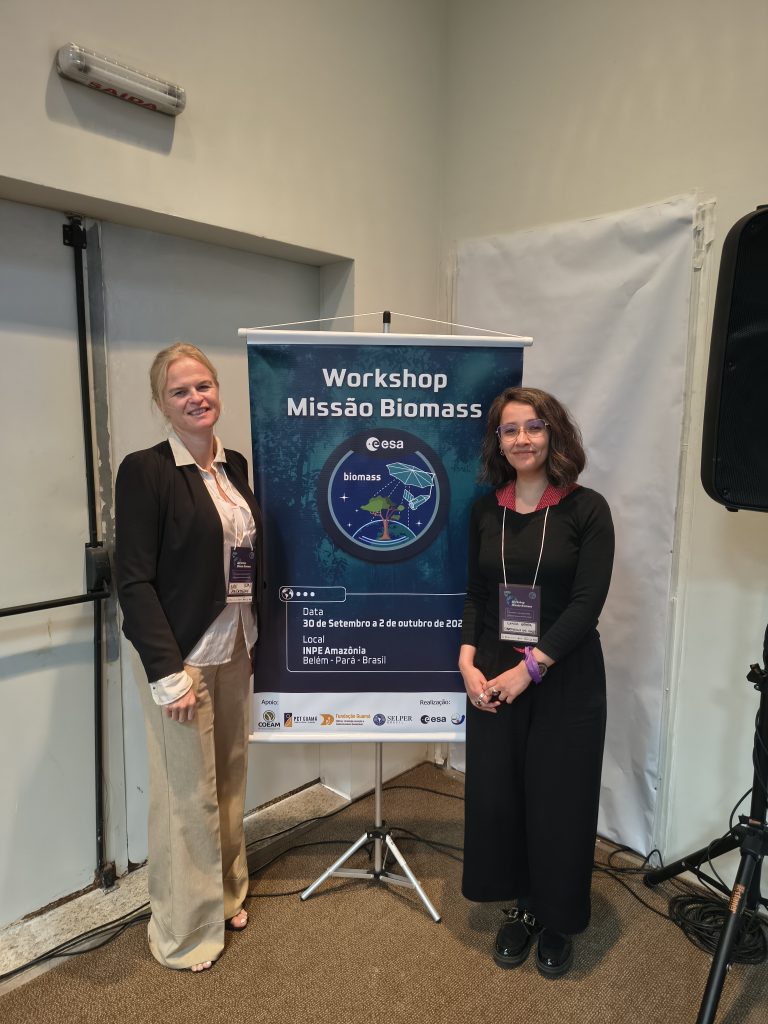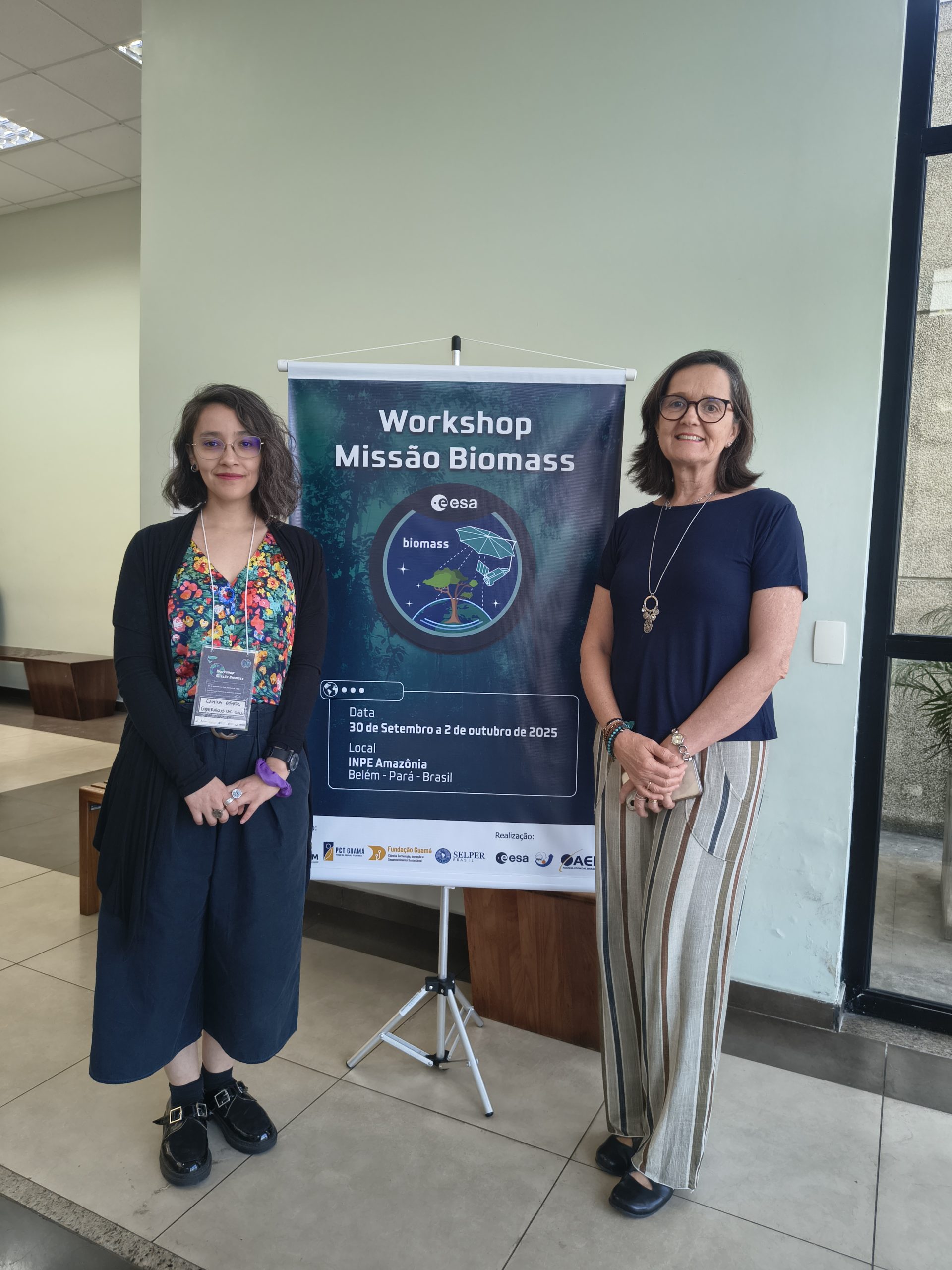From September 30 to October 2, the event “Cooperation between Brazil and the European Space Agency on Data and Applications from the Biomass Mission’s Earth Observation” was held in the city of Belém, Brazil, hosted which brought together various researchers, graduate students, environmental agency staff, representatives from the geotechnology industry, and NGOs, including Camila Gómez, a member of the CopernicusLAC Chile Service Development team.
This is the first event dedicated to the European Space Agency’s (ESA) Biomass Mission, the result of a collaboration between ESA, Brazil’s National Institute for Space Research (INPE) and the Brazilian Space Agency (AEB), with the support of the Latin American Society for Remote Sensing and Spatial Information Systems (Selper) Brazil, PCT Guamá and the Guamá Foundation.
The Biomass Mission was launched on April 29, 2025, and in its eight months of operation, it has been responsible for collecting and delivering key information on the state of the world’s forests and how they are changing, as well as expanding knowledge of their role in the carbon cycle.
The Biomass Mission is also equipped with a P-band synthetic aperture radar, making it the first satellite orbiting the Earth with this technology. “The P-band is capable of penetrating clouds and tree canopies to measure trunks, branches, and stems. The signals received by the satellite will reveal estimates of the height and biomass of forests,” explains Gómez.
The role of forests on Earth is extremely important because they absorb and store large amounts of carbon dioxide (CO2), helping to regulate the planet’s temperature. But deforestation, degradation, and especially the consequences of climate change accelerate the release of stored carbon into the atmosphere.
In response to this, Camila Gómez, who holds a master’s degree in Global Change Geography, comments that “the Biomass Mission will allow us to identify areas with vegetation loss over time, providing quantifiable measures of the damage caused by different types of disturbance, both natural and human.”
He adds that, “although the information provided by the satellite focuses on measuring biomass in forests, its results will also serve to identify annual variability in other types of coverage, such as crop areas. Similarly, it will serve to monitor tree cover within cities.”
CopernicusLAC Chile’s participation in the Biomass Mission Workshop reinforces its commitment to international scientific cooperation and regional capacity building in Earth Observation. These types of events strengthen ties with space agencies, academic institutions, and environmental organizations, promoting knowledge exchange and the creation of innovative applications that benefit ecosystems and communities.






